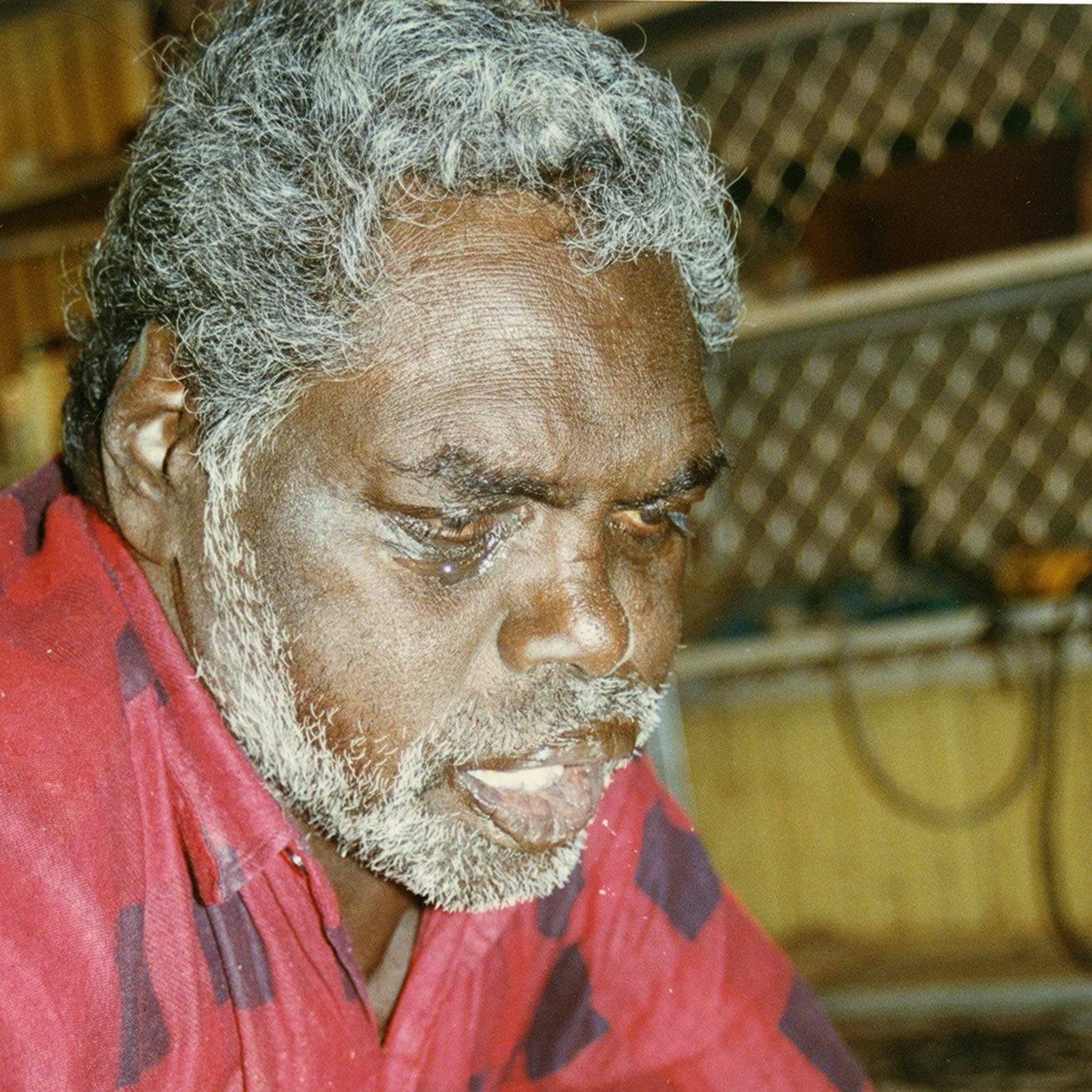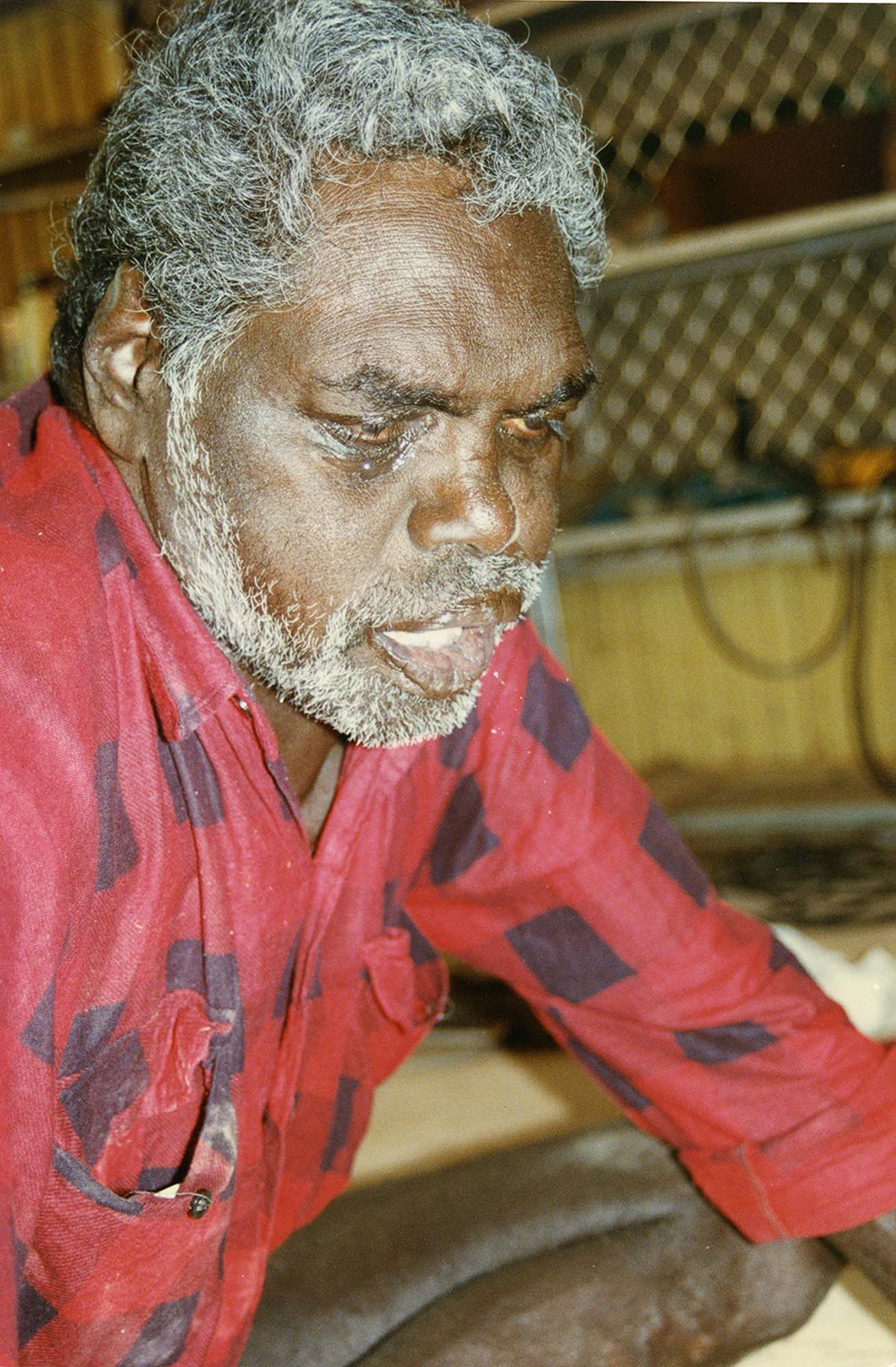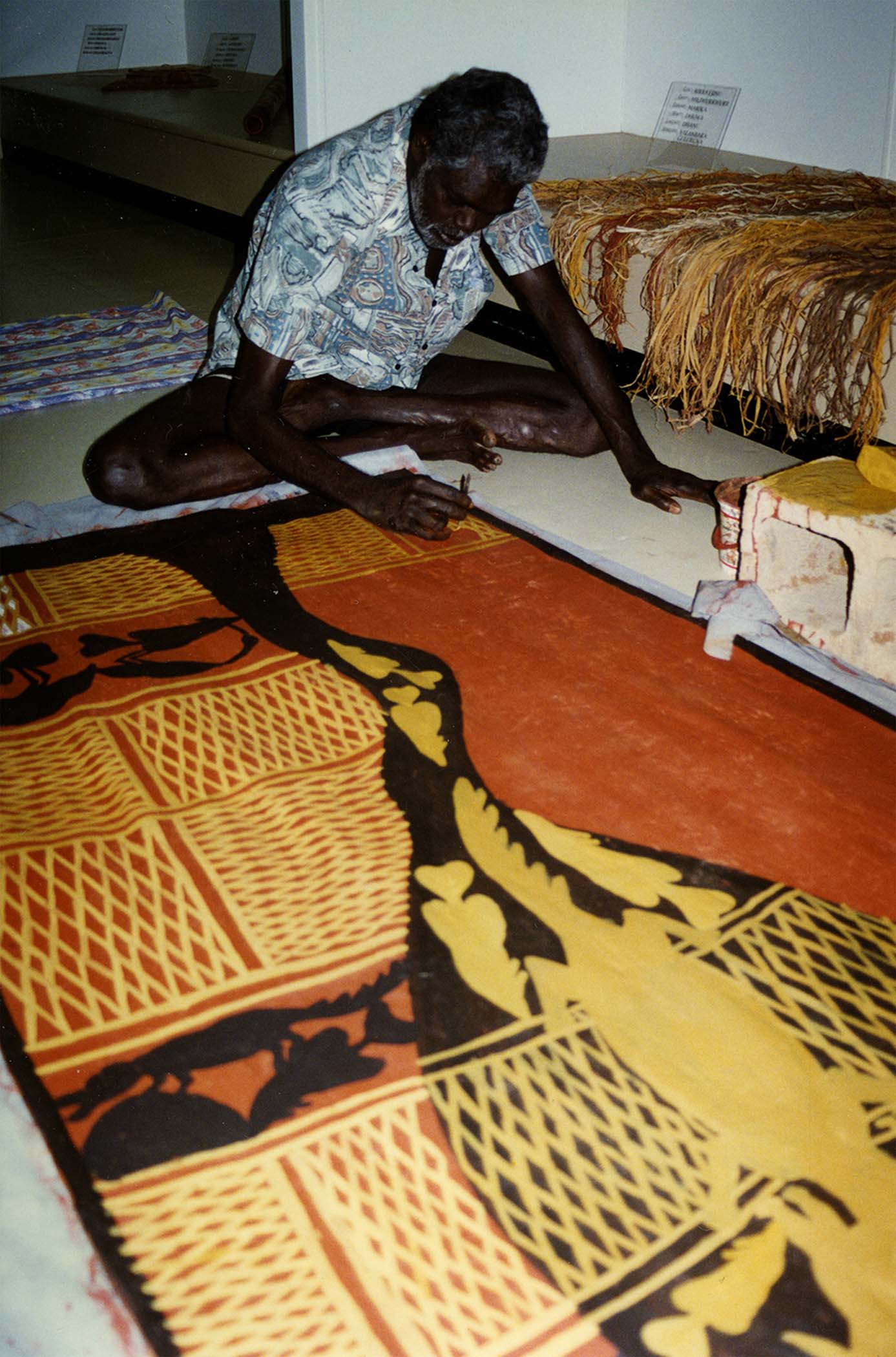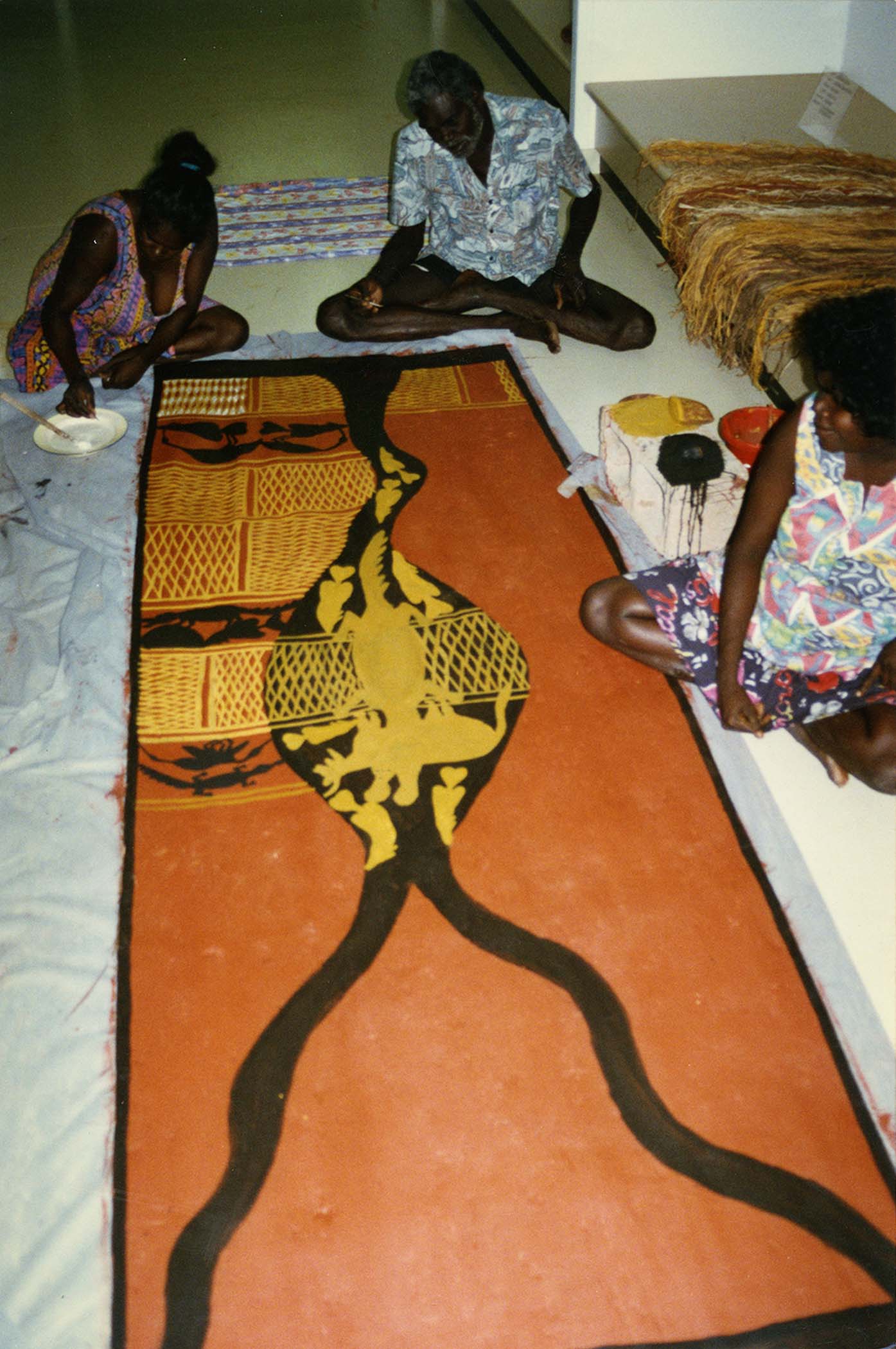
"Two creeks join into one like in this painting by my wäwa (brother) Miṉyiyawany Dhäkuwal Yunupiŋu: that is top Gumatj and Maḏarrpa, joining into one and going out to the ocean. At this place, Bäru (the ancestral crocodile) ate a wild cow (baṯbuluk or buliki ) here in the middle of Miṉyiyawany’s painting—where the two creeks meet. You can see the two waters mixing before heading out to sea, to Yarrwiḏi-Gumatj Country, toward the island Murrmurrŋa where the Stingray and Crocodile fought. Maranydjalk (Stingray ancestor) struck Bäru (Crocodile ancestor) on the leg, and his barb broke off and turned into the mangroves standing at Wäkuwala. "
– YÄLPI YUNUPIŊU
More Info
The sacred paperbark swamp behind the beaches at Birany’birany is named Ŋalarrwuy. This area is represented by the central bulge occupied by Bäru. Bäru is the ancestral fire-bringing crocodile and is painted on its nest of fire with a cow between its jaws.
Ŋalarrwuy is signified here as a place of fertility because Bäru goes from the sea to this area to breed and lay eggs. Nyuŋala, the totemic ox-eye herring, is seen throughout the painting as a companion to Bäru. In the Ŋalarrwuy swamp, the waters of the river mix with the sea.
Another mixing of the water occurs outside of the river mouth. Once off shore, the river waters mix with Maḏarrpa clan waters signifying the kinship relation of märi-gutharra (the relationships and obligations of one’s mother’s mother’s people, land, and law).
The diamond design of the Gumatj clan fills the bottom two thirds of the work. This design represents the elements of ancestral fire and Yolŋu (people) for this clan. A line using two Bäru demarcates the clan territory. This denotes sea rites, because the design belongs to the Maḏarrpa clan. Here, the open ended ribbons of diamond that belong to the Gumatj clan’s märi indicate the fire and saltwater that came from Yathikpa.
– Buku-Larrŋgay Mulka Centre
Additional Information
Decade
1996
Medium
Natural pigments on eucalyptus bark
Dimensions (IN)
118 x 41 1/2
Dimensions (CM)
299.7 x 105.4
Credit
Kluge-Ruhe Aboriginal Art Collection of the University of Virginia.
Gift of John W. Kluge, 1997. 1996.0035.020.
Narrative
Gumatj
The Gumatj are a large clan, with homeland communities at Gunyuŋarra, Birany’birany, Dhanaya, Bawaka, Maṯamaṯa...
Songline
Bäru | The Saltwater Crocodile
During the Waŋgarr (ancestral times), there was a woman named Dhamiḻiŋu. She lived with her...
Location
1990s
Buku-Larrŋgay Mulka Centre began the 1990s in a phase of rebuilding. By the end of...
About The Artist(s)

Clan
Gumatj
Artist Dates
1947–2008
Miṉyiyawany Dhäkuwal Yunupiŋu
The son of Bunuŋgu Yunupiŋu, Miṉyiyawany Dhäkuwal Yunupiŋu was a respected elder and artist. In the late 1990s, with assistance from his wife Banbiyak #2 Munuŋgurr, he produced a series of very precise, monumental works on bark and ḻarrakitj for projects including the John W. Kluge Commission and the Native Title and Saltwater exhibitions. In recent years, his son Wanapati Yunupiŋu has emerged as an important artist on steel and bark.
Collections Represented
Art Gallery of New South Wales
Australian National Maritime Museum
Kluge-Ruhe Aboriginal Art Collection of the University of Virginia




